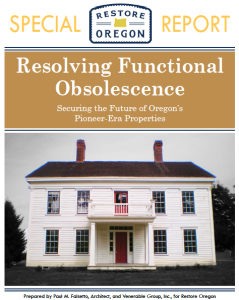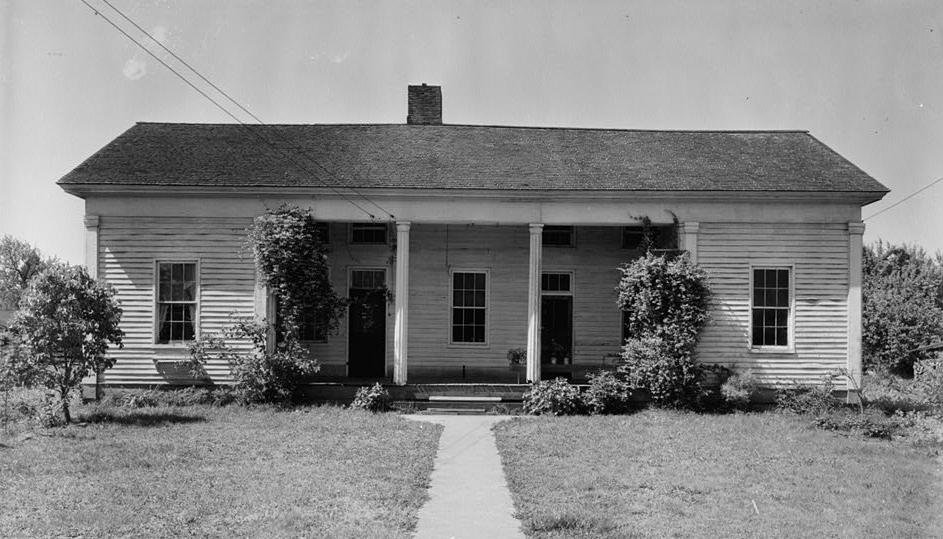 The story of the Oregon Trail has been told in textbooks and in local lore since the close of the Pioneer period 150 years ago. But the tangible evidence of this early period of Euro-American settlement has almost entirely vanished from the landscape. Just 5% of the buildings that stood in the Willamette Valley in 1865 remain standing today. Many of these survivors are functionally obsolete and likely to collapse into the landscape unless viable uses can be found that will support their maintenance.
The story of the Oregon Trail has been told in textbooks and in local lore since the close of the Pioneer period 150 years ago. But the tangible evidence of this early period of Euro-American settlement has almost entirely vanished from the landscape. Just 5% of the buildings that stood in the Willamette Valley in 1865 remain standing today. Many of these survivors are functionally obsolete and likely to collapse into the landscape unless viable uses can be found that will support their maintenance.
A new Restore Oregon study authored by Paul Falsetto, Architect, and Venerable Group, Inc., makes the case that to sustainably preserve the remnant, we must identify market-driven uses for these unique structures. The authors urge preservationists and property owners alike to think of Pioneer houses as living history, not dead artifacts, because:
The overlap between what a building can accommodate without diminishing its historic character and what uses the market can support is where truly sustainable preservation exists.
One example cited is the Bybee-Howell House, an 1856 Classical Revival residence located on Sauvie Island. Listed in the National Register and owned by Metro, the regional government for the Portland metropolitan area, it is currently unoccupied after languishing for decades as an under-performing museum. The report proposes turning the house into a hostel open during travel season or a welcome center that also provides seasonal staff housing.

adapted into a welcome center with
staff bedrooms.
Similar reuse strategies, complete with work scopes, cost estimates, income potentials, and reuse diagrams, were completed for three other Pioneer-era properties:
- Corvallis’ Gaylord House (c.1857). Reuse as a City-owned guest house.
- Gervais’ Sam Brown House (1856-58). Reuse as a private single-family residence.
- Molalla’s Dibble House (1856-59). Reuse as a high-performing museum after sale of ancillary assets to pay for restoration.
The authors conclude that while Pioneer-era properties are significant historic treasures, they are also real estate assets subject to economic forces. Addressing the demands of the marketplace–regardless of whether the property is held in public, private, or nonprofit ownership–must be a key component of a sustainable preservation strategy. When the economic value of these storied properties are increased, resources will then be directed towards maintaining and preserving them over the long term.
The full report is available as a PDF.

for reuse as a museum, raising questions about economic viability. Photo: Library of Congress, 1934.

